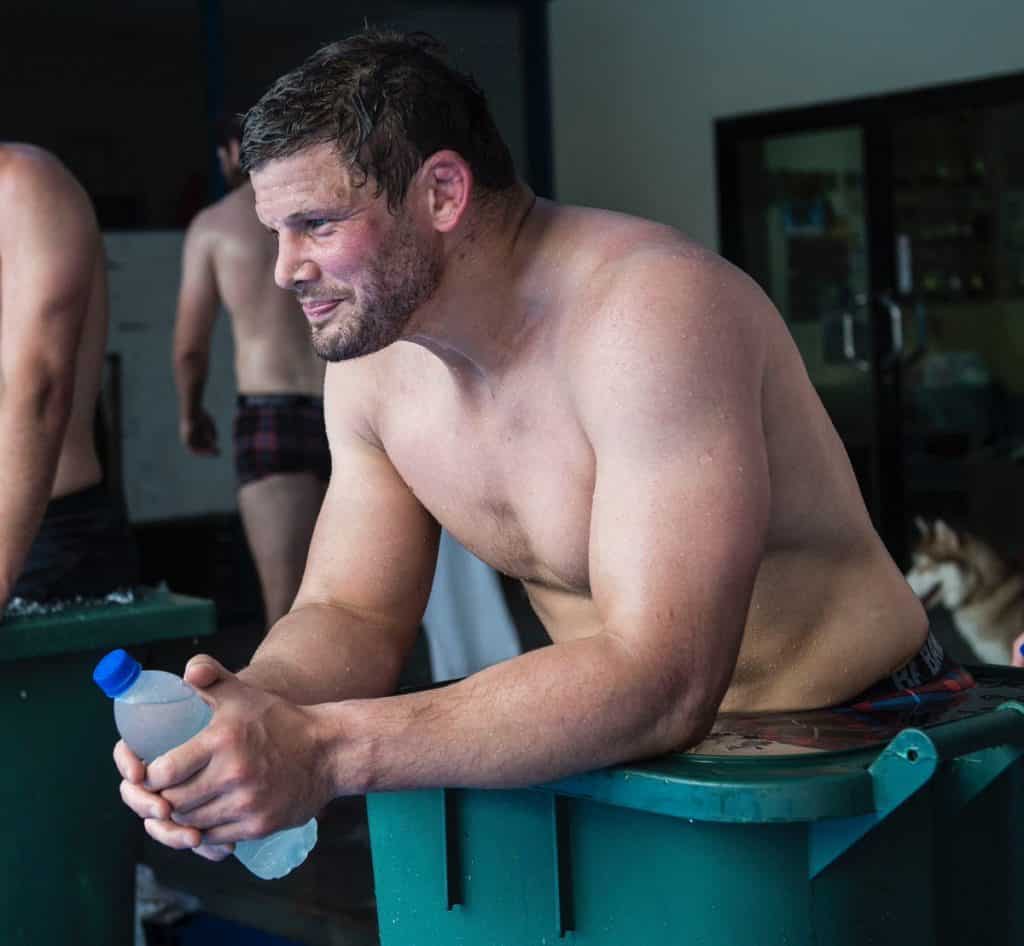
Watching a rugby match where players are smashing into each other at frightening speeds for 80mins, one naturally wonders how exactly do they get out of bed the next morning? Let alone play another game a week later. It is time to take a look at how footy players manage soreness and deal with the brutal nature of rugby.
How do rugby players recover?
To recover from a rugby match players will have ice baths to reduce inflammation and supercharge their bodies’ recovery process. They will have massages to reduce muscular pain and tension. Players will stretch so they don’t lose mobility and eat a nutritious post-game meal to ensure their body has the nutrients it needs to recover.
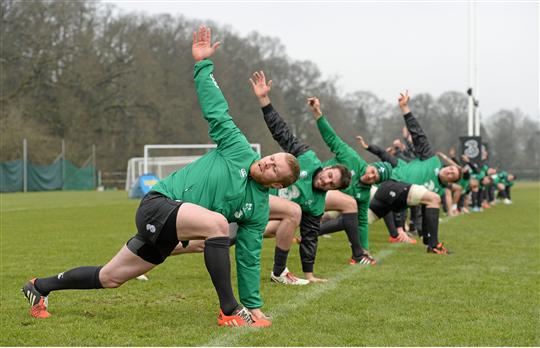
As rugby players have gotten bigger, stronger and fitter as the game has become more professional the game has only become more taxing on the body. To deal with the fatigue rugby players have taken their recovery very seriously as they look for ways to improve their performance, avoid injuries and prolong their careers.
Tavares et al. (2017) conducted a survey of 26 amateur and 32 elite rugby athletes on their recovery methods and their perceptions of recovery Elite rugby athletes used more recovery methods than amateur players (8 vs 3) and were involved in more weekly recovery sessions per week (25 vs 6). Elite players also thought active recovery, massage, pool recovery, additional sleep and stretching were of greater benefit than the amateur players.
The results of the study are to be expected. As you climb the levels of rugby you will face tougher and tougher competition and your training volume will increase as the environment becomes more professional. High competition and training volume places increased stress on your body. To deal with this increased stress you will need to dedicate more of your time to recovery.
Why Do Rugby Players Have Ice Baths?
Rugby players suffer from high amounts of inflammation where parts of the body become hot and swell as the result of soft tissue damage. The intense cold of ice baths significantly reduces inflammation in rugby players.
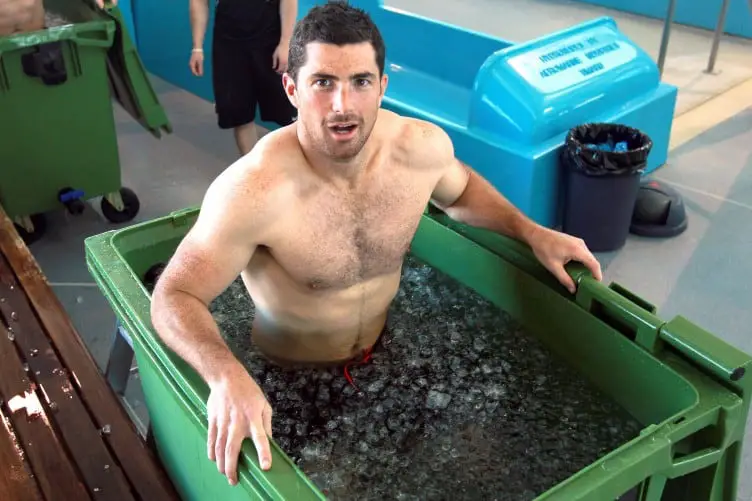
Ice baths don’t just reduce inflammation. Ice baths have also been shown to speed the body’s natural healing process. When an athlete immerses himself in the cold water his blood vessels restrict and his circulation is inhibited. When the footy player gets out of the bath, his vessels become unrestricted and his body is flushed with healthy blood leading to increased circulation which supercharges his body’s recovery process.
Higgins et al. (2012) studied 25 rugby players. Half of the players received 2X5min ice baths post workout while the other players underwent passive recovery. The results of the study indicated that the ice bath group performed 6% better than the passive recovery group in their second workout following their hydrotherapy. The results suggest that ice baths are an effective tool to help rugby players recover and can lead to increased performance.
Why Do Rugby Players Get Massages?
Rugby players get massages to maintain and increase flexibility. Sports massages can reduce muscular pain and tension. Sport massages can help rugby players relax and get a good sleep as after a tough game of rugby there Adrenalin is in overdrive and it can be difficult to calm down.
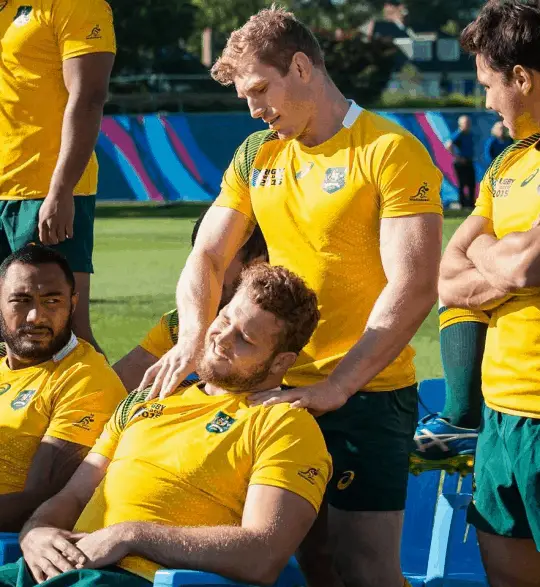
Sports massages have been shown to increase range of motion in rugby players. Rugby requires high degrees of flexibility and athletes who develop their flexibility can improve their speed and power output during a match. Rugby players who are highly flexible and are less likely to suffer sprains and tears which are common injuries.
Dursley (2012) tested the active knee extension of 14 rugby players both pre and post massage. The results determined that pre massage the average angle of knee extension was 63.17° and 76.39° post massage. These results indicate that sports massage is effective in increasing hamstring flexibility among rugby players, meaning that massage reduces the risk of hamstring sprain and increases sprinting speed.
Does Stretching Help Rugby Players Recover?
Stretching is the most common form of recovery used by over 80% of rugby players. Stretching helps rugby players increase range of motion and reduce muscle pain.
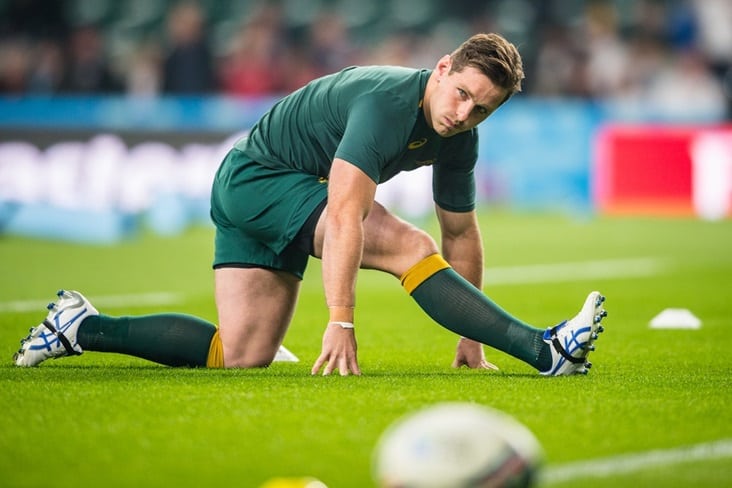
Following a workout or game of rugby players will perform static stretching. Static stretching is where you hold a position for a long period of time. A classic static stretch is touching your toes and holding it for 30 seconds. Static stretching has shown to decrease muscle pain and cause permanent increases in flexibility.
Prior to a workout rugby players will perform dynamic stretching to warm their bodies, loosen their tendons and increase their mobility. Dynamic stretching involves movements through a range of motion such as leg swings, running with high knees and skipping. Dynamic stretching prepares rugby players’ bodies for a match, allowing them to move pain free and with maximum mobility.
What Do Rugby Players Eat After A Game?
After a rugby match players will eat a high protein meal consisting of red meat or chicken to help their muscles recover as protein is the building blocks of muscles. Athletes will also eat a high carb meal made up of rice or pasta to replenish lost glycogen stores which fuel the body.
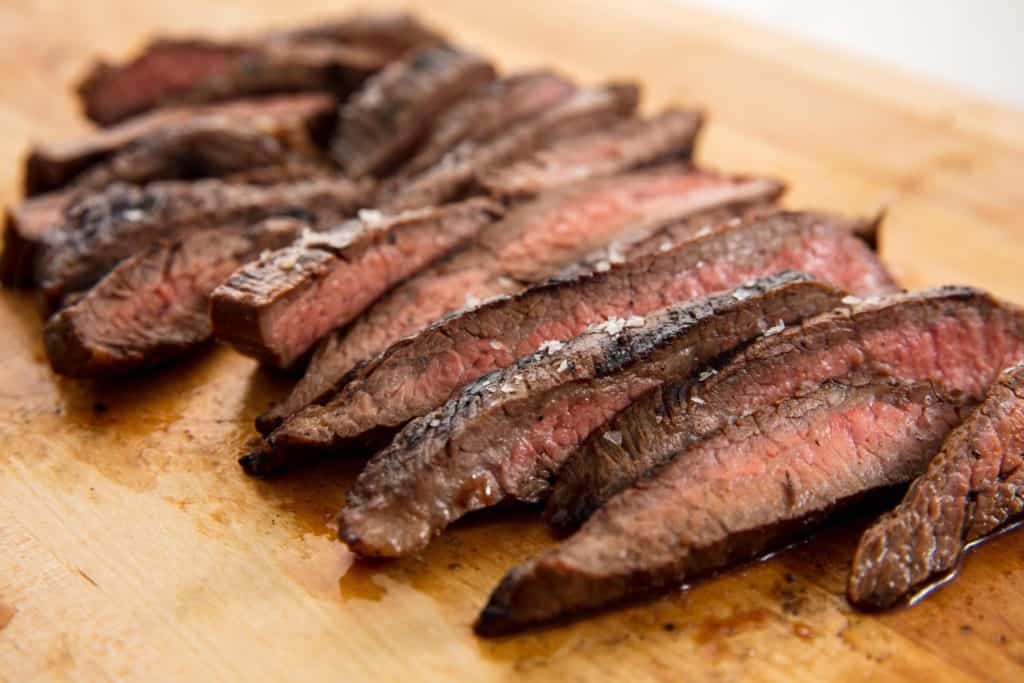
Protein is the most effective macronutrient to build and to help muscles recovery. After a game of rugby athletes’ muscles are exhausted, all that sprinting and tackling really drains their muscles.
To prevent any muscle loss players will load up on protein following a game. Foods which contain high amounts of protein and are popular with rugby players include steak, ground beef, chicken breast, chicken thighs and eggs.
Many rugby players will eat large amounts of lean beef to maximize their protein intake while keeping their fat intake mild. Rugby players will eat 1 gram of protein per pound of bodyweight daily. As many players weigh well over 220 pounds this is quite a lot of protein. To hit this number they need to consume a lot of high protein foods.
Rugby players use carbohydrates to give them energy and fuel themselves during a gruelling match of rugby. By the time the final whistle is blown players will have burned over a thousand calories and their glycogen stores will be depleted. To ensure that they have enough energy for their next training session they need to replenish their glycogen stores by eating carbs.
Foods which are high in carbs but are healthy include rice and pasta. These two are big favourites among rugby athletes. Many players will combine a big plate of rice or pasta with red meat to ensure they are not losing muscle mass and re energising their bodies.
Conclusion
Rugby players take a lot of damage during a match. To reduce the amount of soreness they feel the next day and to help them get back on the rugby field feeling brand new they incorporate a variety of recovery methods.
The most common recovery methods used by rugby players include ice baths, massages, static stretching and a nutritious post-workout meal. Playing the match is only half the battle to ensure rugby athletes can play their best again next week they need to dedicate a lot of time and energy on their recovery.
